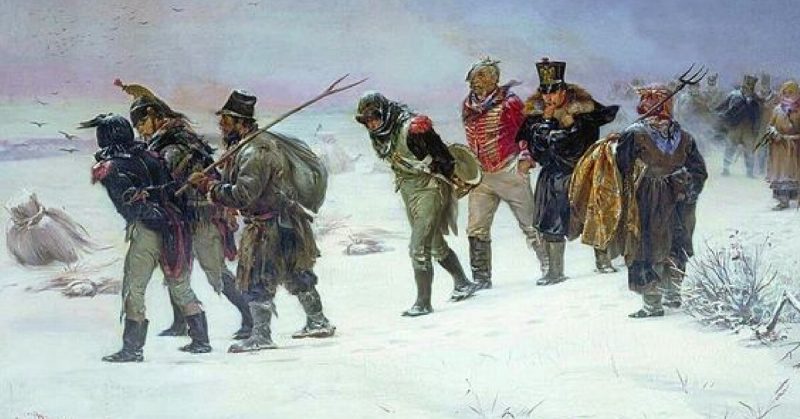Rain and snow tend to make people stay inside with a nice cup of tea, hot chocolate, or maybe something stronger. As you would expect, the vast majority of military history is full of generals going out of their way to avoid bad weather. Rain, snow, and cold make battles more unpredictable and mess with supply lines.
But there are a few notable examples of battles and campaigns fought in truly awful weather conditions; here are a few spanning thousands of years of history.
Battle of The Trebia River: Romans Wade Through a Freezing River for no Good Reason
The Romans and Carthaginians had yet to fight a major land battle in the Second Punic War. Hannibal had been in Italy for several months and threatened to move to central Italy. He was opposed by Consul Tiberius Sempronius Longus. Sempronius had a lot to prove and had no reason not to be confident in his legions, but he gave them the worst possible chance to succeed.
On the winter solstice in late December, Hannibal sent skirmishers across the Trebia river to attack the Roman camp while the rest of his army ate breakfast around campfires just before dawn. The Romans were rudely awakened and Sempronius sent his army out immediately, determined to fight a pitched battle and remove Hannibal from Italy.
This involved sending his men across the icy-cold Trebia river amidst some snowfall. Hannibal’s skirmishers were mounted, but the Romans had to wade through water that was chest-deep. Men reportedly dropped their weapons because their arms were too cold to grip them. Once the fighting began, Hannibal sent some hidden cavalry to attack the back of the Roman formation, freshly out of the freezing water and the battle was won quite easily, sending shockwaves through Italy.
Napoleon Learns Why You Never Invade Russia in the Winter of 1812
The Russians know this as the Patriotic War, and it took a lot of guts to fight it the way they did. When Napoleon invaded Russia he woke a giant, but he was confident that his grand army would push forward to take Moscow and force the Russians to surrender before winter ever became an issue.
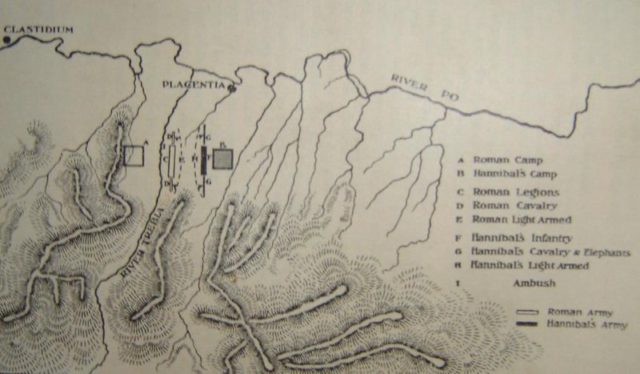
The Russians knew how formidable Napoleon was and decided on a scorched earth policy. The Russians fought multiple battles with the French but continued to retreat, even if they scored victories. They took all the supplies from the land, straining Napoleon’s supply. After the massive Battle of Borodino, just outside Moscow, Napoleon easily took the great city, but the Russian surrender didn’t come.
While retreating, the terrible Russian winter began to take its toll on Napoleon’s troops. A swift Russian attack at the Battle of Vyazma disrupted the retreat as soon as it started. The first sub-zero temperatures hit in mid-November and the Russians took advantage during the Battle of Krasnoi. Here, it was a major achievement that the French army even escaped intact. The men were freezing and starving and constantly feared another Russian attack.
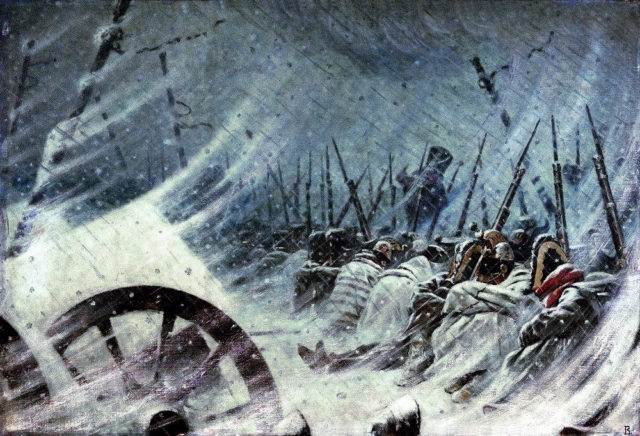
Finally, Napoleon had reached the Berezina River. All he had to do was cross the frozen river, except it had just thawed. Instead of a wide solid river to cross, The French were faced with a wide freezing river with chunks of ice flowing along with it. Several brave engineers braved the frozen waters to construct rudimentary bridges while the Russians launched furious, somewhat reckless assaults on the battered French.
The French flooded across the bridges in a panic, many fell into the water, hypothermia and frostbite affected thousands. The French did eventually get across but lost tens of thousands in the process. The campaign greatly weakened the French army and its reputation abroad. Allies switched sides and soon the War of the Sixth Coalition began, bring Napoleon to his first exile at Elba.
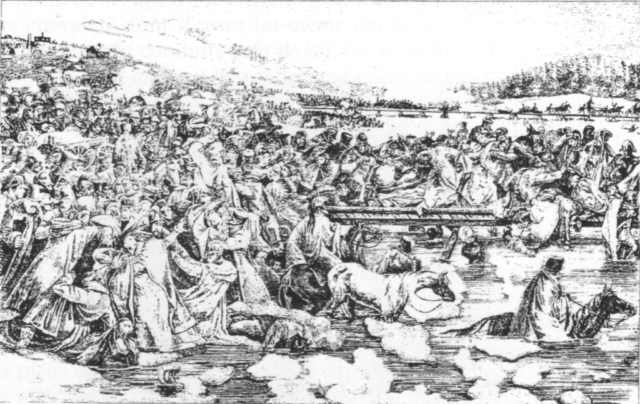
Italian Front of WWI, Trench Warfare in the Alps
One of the more extreme examples on this list, the Italian front of WWI is among the least known campaigns. Though the steep mountains make this more of a campaign in extreme terrain, but the weather certainly played a part as well.
Italy never ended up joining Germany and Austria-Hungary who they were allied with at the beginning of the war and switched to France and Great Britain, hoping to gain some territory around the Alps and Dalmatia. The Italian’s surprise campaign bogged down in the worst possible place, The Alps. Specifically, the Dolomite Mountains were the focus of fierce trench and tunnel warfare.
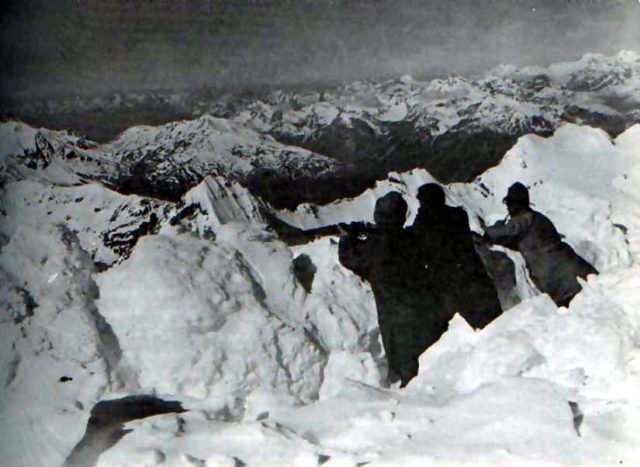
It is hard to believe, but positions were established and battles did take place in places where only serious hikers would have any business being, even today. Avalanches and rockslides were not uncommon, and massive amounts of explosives were used to destroy enemy trenches and tunnels, only causing more slides.
Italy struggled to push forward throughout the war, and later German reinforcement pushed the Italians back so far that they almost had to abandon their lines. When the lines were stable, both sides carved astoundingly elaborate tunnels through the mountains, often barely 100 feet from the peaks.
As I’ve said, the mountains were really what made the campaign difficult, but freezing temperatures, persistent snow and ice and the thin air had profound impacts. Eventually, Italy was able to make a final push to break through in 1918 and struck deep into the Austro-Hungarian Empire.
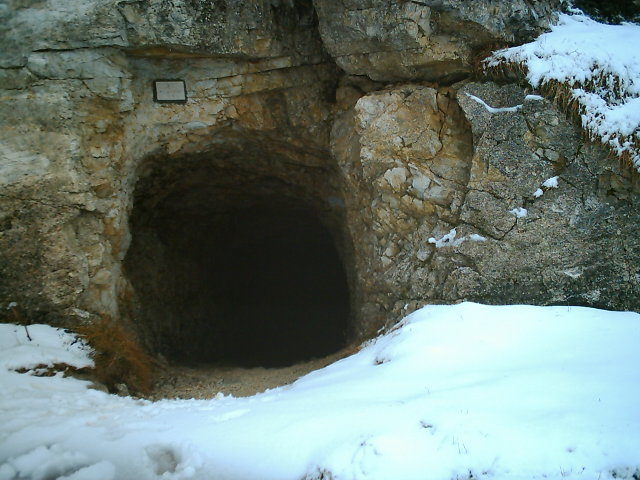
Operation Neptune, WWII: Meteorologists Save the Day
Everyone knows about D-Day, the Normandy Invasion cracked open Europe during WWII. The weather was of vital importance in the preparation and execution of D-Day. The English Channel can have a wide range of storms whip up at a moment’s notice and the weather from rain to wind and raging seas and tide affected nearly every aspect of the operation from aerial bombing and paratroopers to landing craft.
Because of its importance, the allies had teams of the best meteorologists in the world working on forecasts and the prognosis was quite poor on the eve of the invasion, June 5th of 1944. On the evening of June 4th, Eisenhower’s chief Meteorologist informed him that the weather would be too bad on the 5th. This was a bold call as the day had been particularly calm and pleasant, but indeed storms rolled in on the 5th and the forecast called for nearly two weeks of terrible weather.
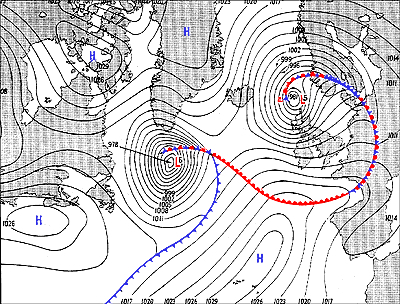
A gap in the weather was discovered by the meteorologists so that the allies might be able to launch the invasion the next morning. This was again a very bold prediction as the weather was now quite terrible. Eisenhower had the ability to postpone a day, but waiting over a week would put a huge strain on resources and force him to move huge amounts of men and ships. Eisenhower decided to shoot the gap in the weather. As it turned out, the later invasion date, approximately June 19th, saw an even worse storm batter the channel.
As we all know, the invasion was successful, though with many casualties. just because the weather was clear enough to proceed, does not at all mean the weather was “good”. The worst feature was probably the waves. The allies had battalions of tanks equipped with canvas screens to create a floating ring around the tank while the tank’s engines powered a propeller. They were intended to survive waves a little over a foot. The waves on D-Day approached 6 feet. At Omaha Beach, only two of the 29 DD (Duplex Drive or Donald Duck) tanks made it to shore, the rest sank. Though many factors affected the wide scattering of the paratroopers, bad weather was certainly one of the main reasons. Many other aspects of the invasion were impacted, but at least the weather did not cause an invasion failure.
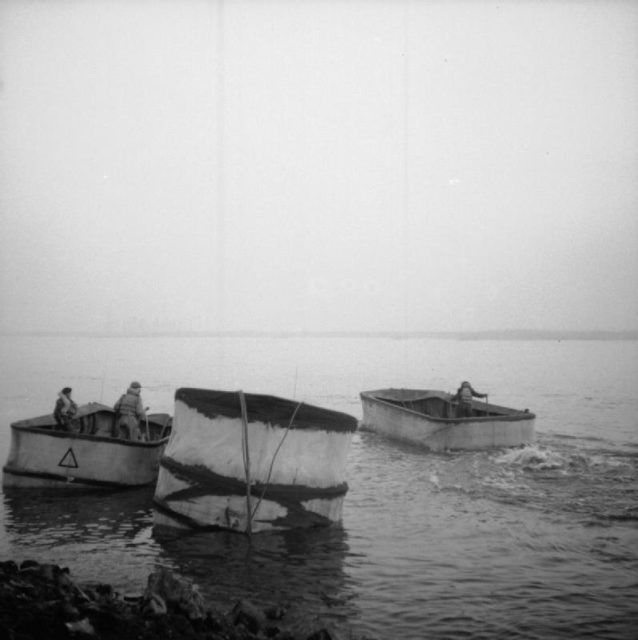
On the contrary, weather forecasting of the Germans was not as good. They did not have control of the seas to the north and west and the British used their own and Irish weather equipment. The Germans assumed that the storms would be consistent enough that an invasion would be extremely unlikely. Many commanders had left their posts and a large amount of the soldiers were given leave. There were many outcomes of WWII that rested on the smallest factors, and the weather was certainly one of those factors on D-Day of the Normandy invasion.
